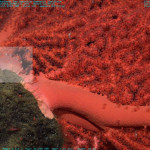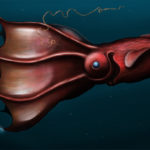It’s just a few short weeks until the final deadline for your submission! To recap, the National Evolutionary Synthesis Center is offering two $750 travel awards for bloggers with the best posts covering new and emerging evolutionary science.
To apply for an award, writers should submit a blog post that highlights current or emerging evolutionary research. In order to be valid, posts must deal with scientific results appearing in 2009. Posts should be 750‐1500 words, and must mention the NESCent contest.
The competition so far looks pretty stiff.
- At Not Exactly Rocket Science, Ed Yong discusses how male butterflies that are yellow prefer yellow females, but white males are not so choosey…behavior that could lead to a new species
- At Laelaps, Brian Switek examines whether the now extinct adapids, lemur-like primates best known by the recent announcement of “Ida”, are related to the early anthropoids to our earlier evolutionary predecessors.
- At Denim and Tweed, Jeremy Yoder explains how the benefits you receive from milk depend on where geographically you drink it.
- At Neurophilosophy, Mo discusses new work detailing how night time and social rendezvous control charge intensity in electric fish.
- Zen at Neurodojo asks if organism evolves from A to B if it can still evolve back to A.
- Kristopher Hite at Tom Paine’s Ghost contemplates whether evolution is a theory or theorum.
- At Observations of a Nerd, Christie Lynn discusses how selection in the Hawaiian Akepa, which favors the production of male offspring early in the year, is dooming the remaining population.
- Bjørn Østman at Pleiotropy explains how evolutionary theory informs us to use less, not more pesticides, to rid the world of malaria.
- Julie Zichello blogs from the field about her involvement with a team of 20 scientists hunting for fossils on Rusinga Island in Kenya.
- And lastly, at Byte Size Biology, red and green algae in the ultimate endosymbiotic cage match for right to the inside of a diatom.






“Zen at Neurodojo asks if organism evolves from A to B if it can still evolve back to B.”
That’s not what I asked!
I asked if organisms that go from A to B can go back to A. A! The organisms don’t have to evolve “back” to B if they’re already at B!
Zen,
Oops typo. Thanks for the heads up.
Craig
Amazingly stiff competition – great reads all.
I nominate Ed Yong for sustained excellence. He is a rock star.